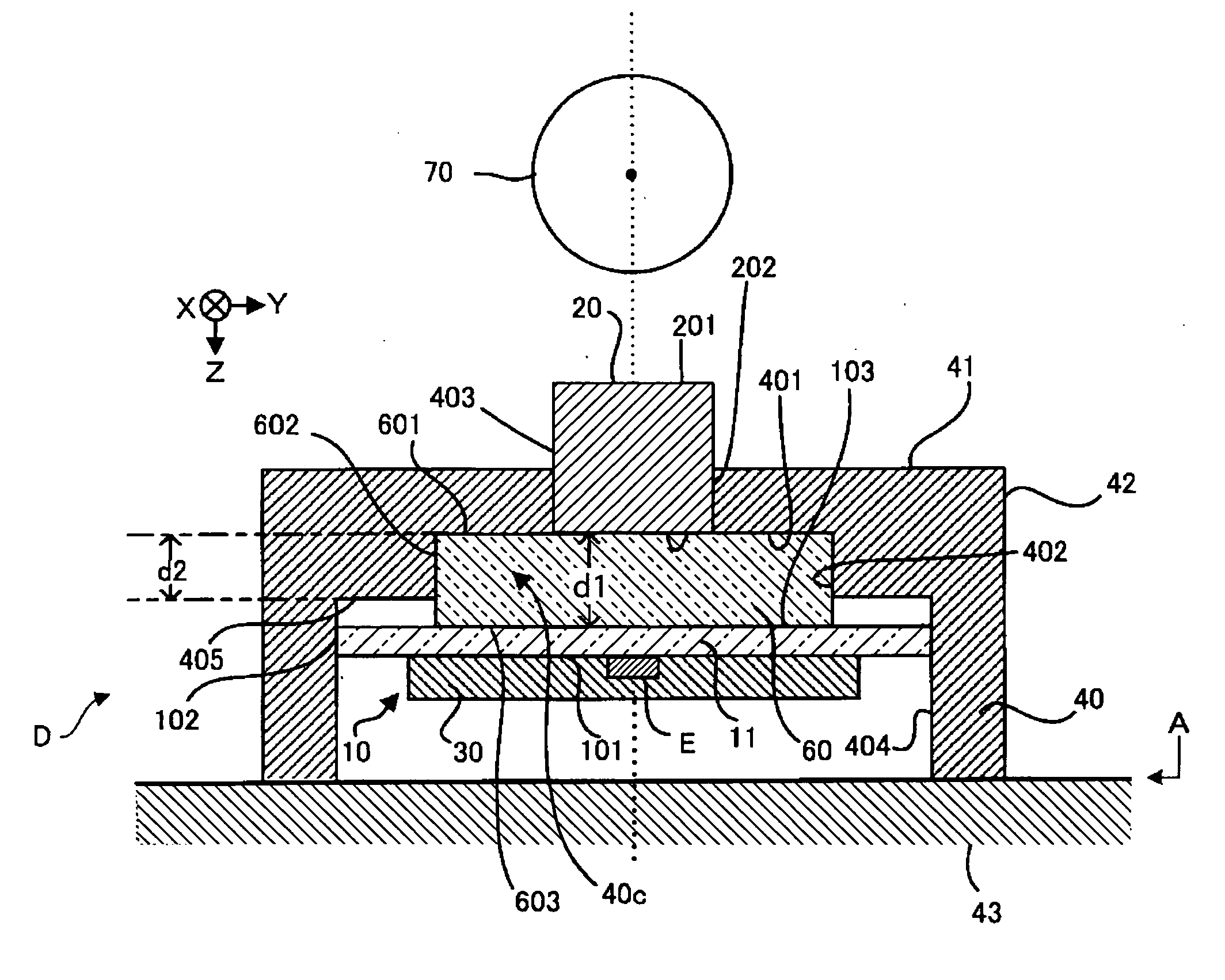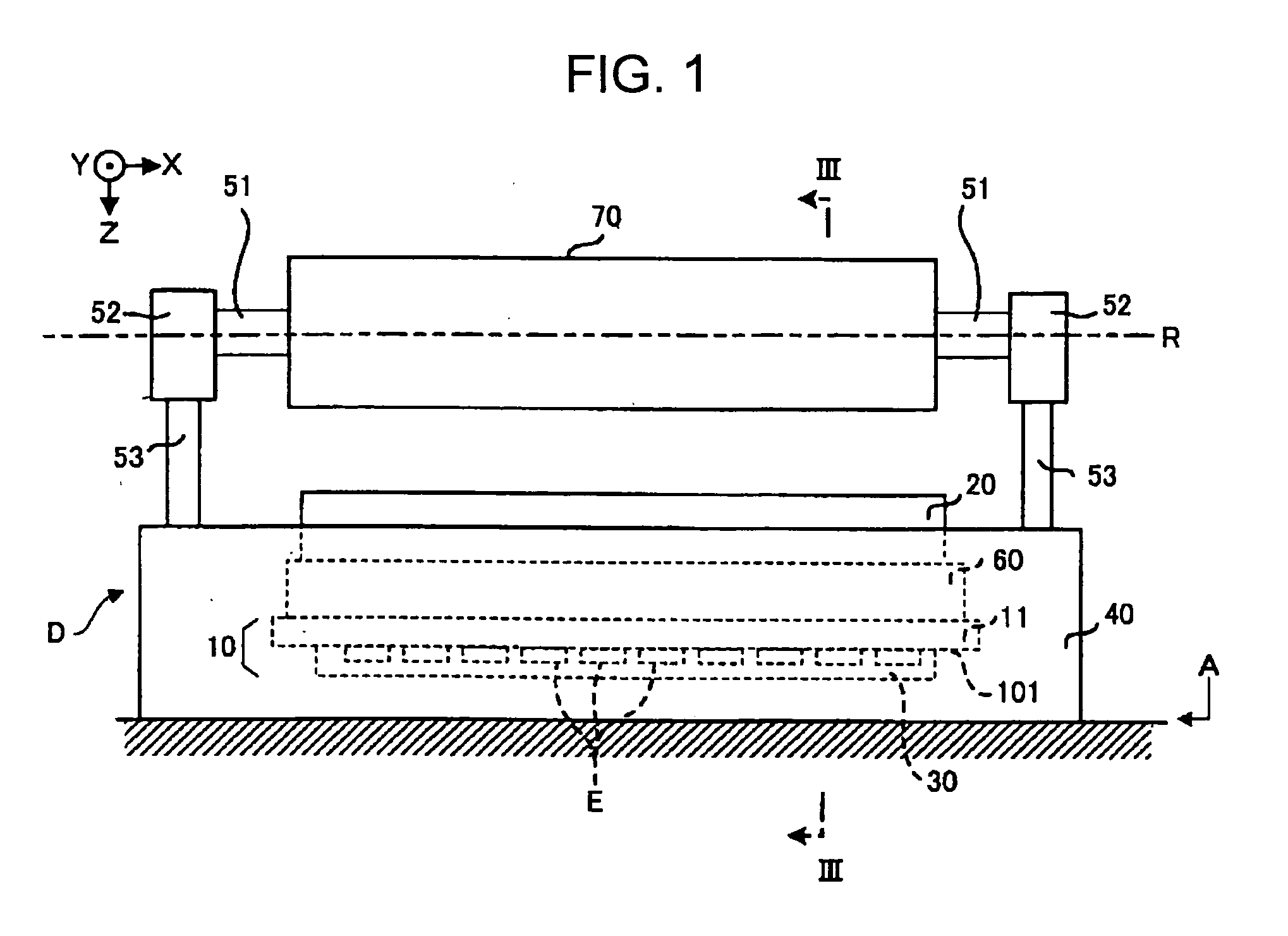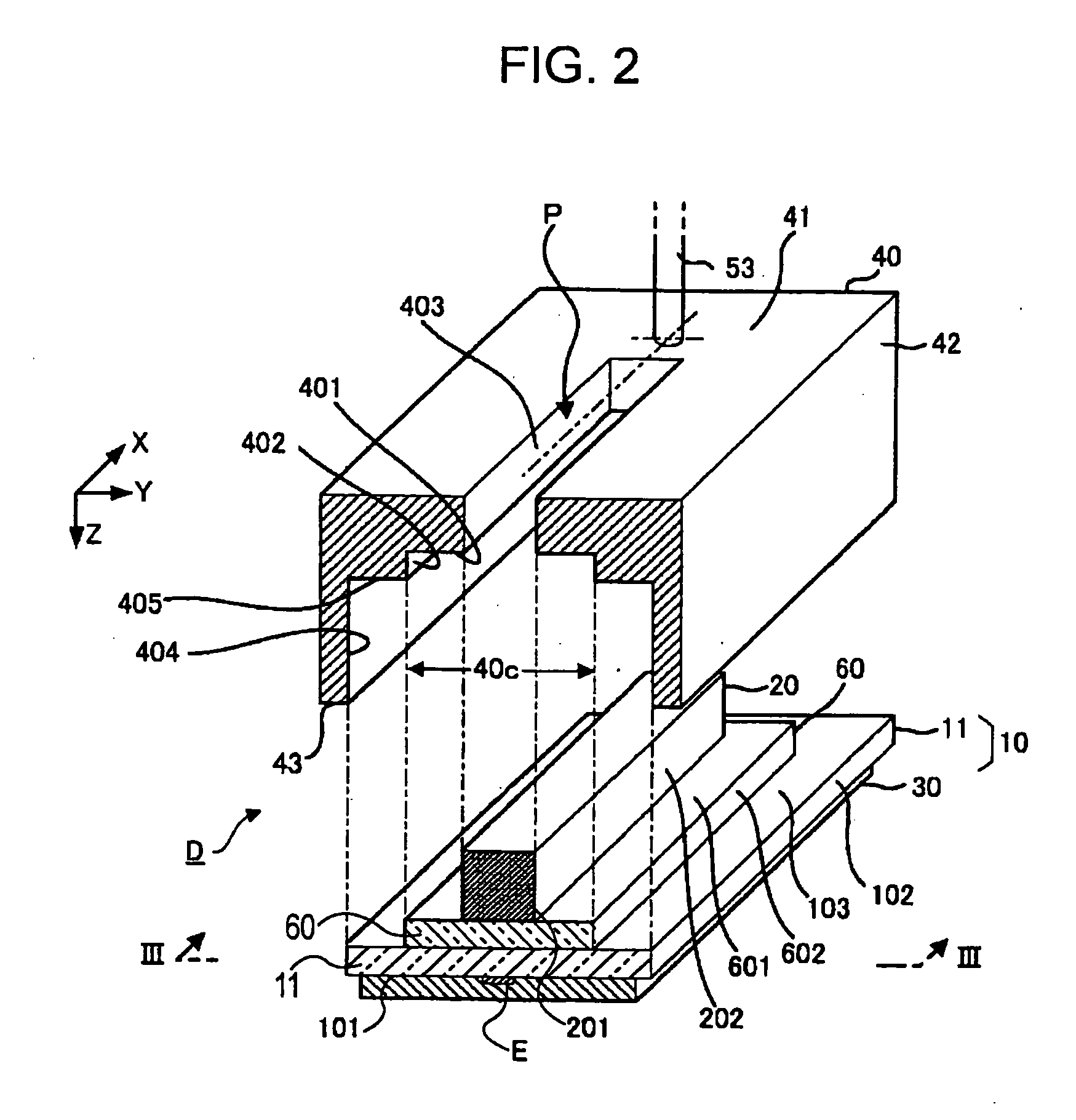Electro-optical apparatus, image-forming apparatus and method of manufacturing electro-optical apparatus
a technology of electro-optical devices and image forming devices, which is applied in the field of electro-optical devices, can solve the problems of low light use efficiency and difficulty in ensuring the amount of light incident to the focusing lens array is sufficient among the light emitted from the electro-optical devices, and achieves high precision, improved light use efficiency, and high precision
- Summary
- Abstract
- Description
- Claims
- Application Information
AI Technical Summary
Benefits of technology
Problems solved by technology
Method used
Image
Examples
modified example
[0057]The above-described embodiment may be variously changed. The modified examples will now be described. The examples may be properly combined.
example 1
(1) Modified Example 1
[0058]In the above-described embodiment, the photosensitive drum 70 is supported by the support rods 53 integrally formed with the upper surface portion 41 of the frame 40. However, when the relative misalignment between the support rods 53 and the upper surface portion 41 is not problematic, the support rods 53 may be separated from the frame 40. In this configuration, the support rods 53 may be mounted on the frame 40 (the upper surface portion 41) or another portion (for example, the installation surface A).
example 2
(2) Modified Example 2
[0059]Although the frame 40 surrounds the electro-optical panel 10, the focusing lens array 20 and the glass spacer 60 over the entire circumference in the above-described embodiment, the shape of the frame 40 may be defined to define only the position in the Z, direction when another mechanism for defining the glass spacer 60 in the X-Y plane is mounted. That is, the frame 40 may not have the step shape and may have only the first facing surface. Similarly, the positions of the electro-optical panel 10 and the focusing lens array 20 in the X-Y plane are not necessarily defined by the frame 40.
PUM
 Login to View More
Login to View More Abstract
Description
Claims
Application Information
 Login to View More
Login to View More - R&D
- Intellectual Property
- Life Sciences
- Materials
- Tech Scout
- Unparalleled Data Quality
- Higher Quality Content
- 60% Fewer Hallucinations
Browse by: Latest US Patents, China's latest patents, Technical Efficacy Thesaurus, Application Domain, Technology Topic, Popular Technical Reports.
© 2025 PatSnap. All rights reserved.Legal|Privacy policy|Modern Slavery Act Transparency Statement|Sitemap|About US| Contact US: help@patsnap.com



